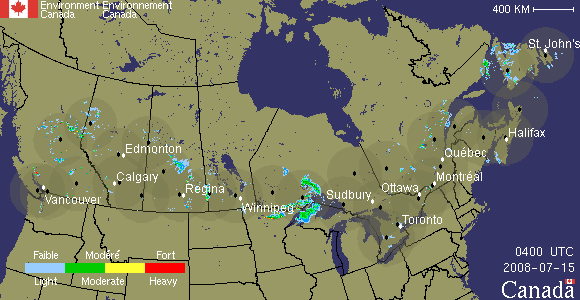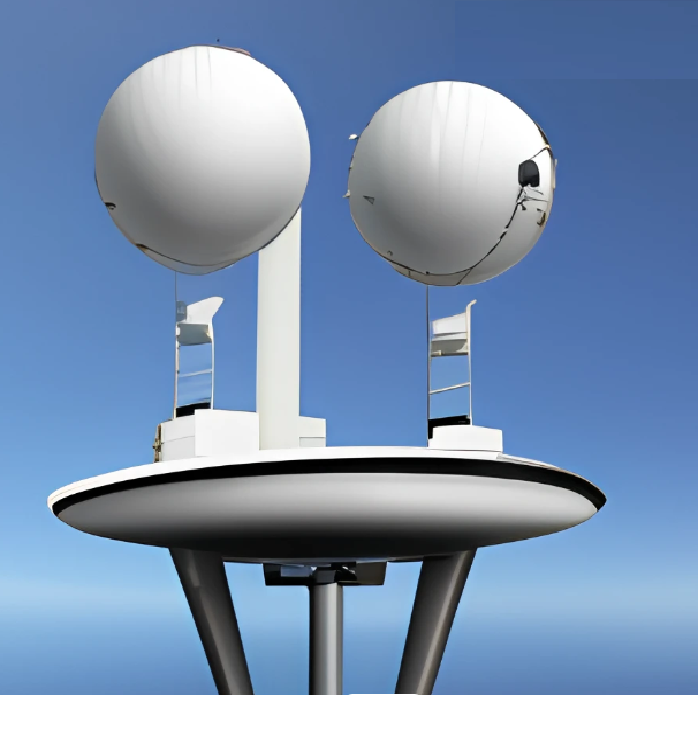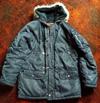- Air Homepage
- Canadian Weather
- Canada Weather Radar
Our Canada Weather Radar Guide will keep you in the know!
Check out Canada weather radar online. On this page, you can see simultaneous results from over 30 Canadian radar meteorology locations. Why?
Mastering Canada's real-time radar map: Decoding Doppler - Have you ever been caught by a sudden downpour or wished you could predict a storm's movement in advance? Be your own weather forecaster by tracking every raindrop and snowflake across the country in real-time with the Canada Weather Radar map!
Find more about Canadian weather.
Did you ever step outside to sunshine, only to get caught in a downpour?
You can see rain, snow, and even storms coming from a mile away with Canada's awesome weather radar!
Here's why you want to use Canadian weather radar:
- Stay on top of weather patterns so you don't get caught off guard.
- Stay ahead of the weather by predicting storms.
- Choose the level of detail you want for your radar views.
- Understand color scales and what's falling.
Weather anxiety gone! With Canada's radar at your fingertips, you'll be a weather pro in no time.
If you're heading out, prepare by checking the radar. You can track weather patterns and forecast potential weather events using it. Temperature, wind speed, forecasts and precipitation are also provided on their website.
 In the wild, a radar station
In the wild, a radar stationEach Canada environment radar weather site is indicated on the graphic above by a black dot with a faint disc showing its range. Major cities are shown in white dots.
You'll see an animation if you click the blue play button above the map and wait a sec. In addition, users can adjust how much background detail they see. Some people find too much information distracting, so they made it customizable. The default settings show major cities and roads with concentric circles. You can also use highway numbers, smaller towns, and watercourses.
The colour intensity scale can be set to eight (default) or 14 colours for more detail, which is what I do. Choose either the three-hour setting or the one-hour default if you want to look at a longer timeframe.
Canada weather radar: more detail
Environment and Climate Change Canada has 31 radar stations working full time. None of them are in the Arctic. British Columbia has four, Alberta has five, Saskatchewan and Manitoba each have two, Ontario has eight, Quebec has five, New Brunswick has one, Nova Scotia has two, and Newfoundland has two. You can get a regional map covering two or three provinces by clicking a province north of the disc covering the city you want.
If your radar isn't working, click inside one of those gray discs for fullest colour detail, complete with animation. If your radar is out of operation, which happens from time to time, it will not function.
Check out the colour scale on the right. You can see where the heaviest precipitation is falling, where the storm is moving, and how fast. Sometimes you can tell if it's going to rain in the next hour or so.
The weather radar image from Canada can help you understand what's happening in your area right now. Here is a step-by-step guide to interpret Canada's weather radar:
-Find the radar image on Environment Canada's website or other weather websites that provide radar images for Canada.
-The legend (inside the small floating window) explains the colors and symbols in the radar image. Green indicates light precipitation, yellow indicates moderate precipitation, and red indicates heavy precipitation, depending on the website.
-The radar image can help you figure out what kind of precipitation it is, like rain, snow, or hail. It takes some training and skill, but analyzing radar echoes can tell you what type of precipitation it is.
-Animate the image using the play button to analyze the movement and direction: By watching the radar echoes, you can determine the direction of the weather system. You can prepare for weather conditions this way.
-Radar images can help you spot severe weather, like thunderstorms, tornadoes, and winter storms. Radar echoes from these areas are usually bright and strong.
In general, interpreting Canada's weather radar image requires careful observation, analysis, and knowledge of the legend and weather patterns. See the Common Interpretation Errors in the upper right corner of the main screen for help understanding the results. When looking at the radar display, it gives you a list of technical issues to keep in mind.
Canada weather radar has not been around forever...
Canadians can monitor and forecast weather in real-time with Environment Canada Weather Radar. Radar is used to detect and track precipitation, such as rain, snow, and hail, and other weather phenomena, like thunderstorms and tornadoes.
Environment Canada Weather Radar dates back to the mid-20th century, when the Canadian government started investing in weather monitoring technology. Meteorological Service of Canada was established in the 1950s to provide weather forecasts and warnings.
In the 1960s, Environment Canada developed a network of weather radar stations that would use Doppler radar to provide more accurate and detailed information about weather patterns. By the early 1970s, there were over a dozen radar stations across our country.
Weather Radar technology has evolved and improved over the years. The system was upgraded in the 1990s to detect wind speed and direction within storms using Doppler radar. The system was further enhanced in the early 2000s with dual-polarization technology, which provided more details about precipitation particles' sizes and shapes.
Go back from Canada Weather Radar to the Weather Canada page, or visit the Stuff in the Air homepage. OR...publish your thoughts on the subject here.
Experienced the cold?
Everybody knows Canada is cold. Always. What do you think?
This country never has summer. Or does it?
Ever been to Canada? Or some other northern place? Russia? Sweden? Alaska?
Antarctica??
Was it a shock?
Other cold weather examples
Look here to see contributions from other visitors to this page...
When stereotypes are wrong 




I have traveled to many cities in Canada, including Vancouver, Toronto and Montreal.
Vancouver is beautiful and typically experiences very mild temperatures …
And ever the twain shall meet 




My favorite cold story from the time I lived in Quebec:
I'm American, so I always had trouble relating to the weather forecasts in Celsius degrees. …
Canadian Radar Weather Output 




I do check weather forecasts everyday. So that way I will know what is going on with the weather. That also helps me decide what to wear or if I need an …
Canada hot and cold 



I lived in Canada for 15 years and loved it. There were days when the weather was cold (very cold) but there were also days when it was beautiful. …
go to canada 



I have always wanted to go to canada. Now that I see it's cold, maybe I'll consider taking more jackets with me... to keep me warm. Thank you for the …
Stereotype Land Not rated yet
-50 degree weather all the time, and everyone looked like dainty little Eskimos, AND THIS WAS IN TORONTO.
COME ON CANADA, the least you could do is …
The majority of the population of Canada has weather like Chicago Not rated yet
I was born and raised in Toronto, Canada. One of the most frequently asked questions I get asked when traveling abroad is how I can stand the cold. Well …
Canada is Cold Not rated yet
I go to Canada once per month. My first visit was in July of last year - the temerature was about 55 degrees (F). I was traveling to Canada from Southern …
Search this site for more information now.
What's happening in your area according to Canada Weather Radar?
Here is a single air page that shows the data from all the Canada weather radar displays. This government webpage provides users with a comprehensive view of the weather in their area, including current conditions and precipitation levels.
Also, you can view historical weather data on the radar displays and gain an understanding of the weather patterns over time in their area.
Do you have concerns about air pollution in your area??
Perhaps modelling air pollution will provide the answers to your question.
That is what I do on a full-time basis. Find out if it is necessary for your project.
Have your Say...
on the StuffintheAir facebook page
Other topics listed in these guides:
The Stuff-in-the-Air Site Map
And,
Thank you to my research and writing assistants, ChatGPT and WordTune, as well as Wombo and others for the images.
OpenAI's large-scale language generation model (and others provided by Google and Meta), helped generate this text. As soon as draft language is generated, the author reviews, edits, and revises it to their own liking and is responsible for the content.













New! Comments
Do you like what you see here? Please let us know in the box below.